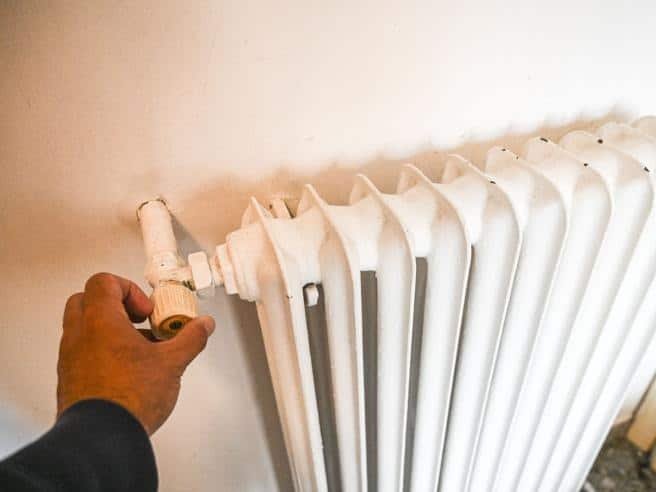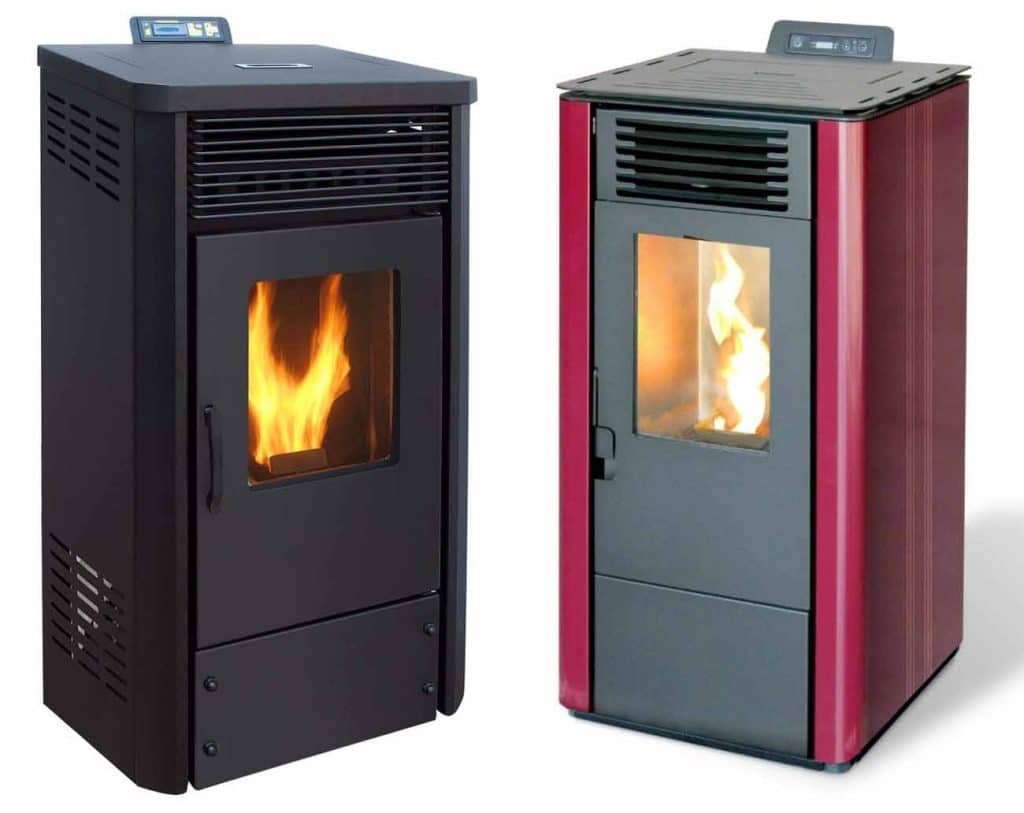introduction
Pellet stove consumption, Sure, here I am! In our previous article on iltermopratico.it, we have laid the foundations for choosing the pellet stove as a home heating solution. Today, we go into detail to answer a crucial question: how much does a pellet stove actually consume and how convenient can it be compared to other options such as diesel, methane, LPG or wood stoves?
We will discover the facts and figures together, analyzing the key variables that influence consumption. We want to provide you with a complete guide to making informed decisions about heating your home.
If you want to delve deeper into the discussion and find the best solutions for pellet stoves, I recommend you take a look at the website Climafast.it for the most efficient and convenient options. For more practical heating tips, also visit our blog at iltermopratico.it. We are here to make your home environment warmer and more welcoming!
Let's proceed!
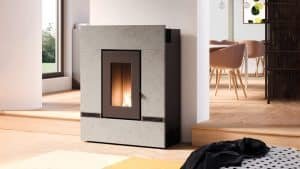
Pellet stove consumption: air or hydro model?
To answer the question "how much does a pellet stove consume" you need to evaluate the stove model to which we are referring.
Indeed, on the market today There are two types of pellet stoves, the following:
- Air: fall into this category pellet stoves traditional, which heat the environment in which they are positioned, spreading the heat like hot air. A pellet stove of this type with a heating power ranging between 5 and 15 kW can cost from €900.00 to €2000.00;
- Hydro: as you can easily imagine, the term hydro indicates the capacity of the pellet stove also heat domestic hot water, then connect it to the home system. These models are also called Pellet thermo stoves it has a higher cost than the previous one, which increases based on the power, up to 35 kW and €6000.00.
The greater the power of the stove, the greater the consumption will also be, and it is clear that a hydro pellet stove is capable of Producing domestic hot water also consumes more compared to a traditional one.
In this case, however, to have a complete picture of costs and consumption, dyou had to calculate the expense you would have incurred, or that you have supported in the past, for the production of hot water with an alternative system, for example the classic gas boiler or electric water heater.
Pellet stove consumption: one-off costs
Before starting to talk about figures, kW, kWh, fuels and comparative tables, it is important to make a small introduction.
In order to understand in a timely manner what the consumption of a pellet stove is it is also necessary to calculate the purchase costs of the device, its installation and periodic maintenance, which is recommended to be carried out at least once a year.
Certain, it is an investment, and the costs just mentioned are one-off, if we exclude maintenance, which however is essential to guarantee correct functioning of the stove, but before proceeding with the purchase it is right that you take these costs into consideration.
Said this, Let's see in a nutshell how much it consumes a pellet stove.
Pellet stove consumption: comparison with other fuels
According to the heating fuel price comparison in South Tyrol carried out by Consumer Protection Center Users, in order to correctly calculate the cost of heating depending on the fuel chosen, the quantities are indicated fuel needed to produce 7,000 kWh.
|
Fuels |
7,000 kWh corresponds |
|---|---|
|
diesel |
700 litres |
|
liquid gas (in tank) |
547 kilos |
|
methane gas |
714 m³ |
|
pellets |
1,458 kilos |
|
wooden chips |
1,556 kilos |
|
split wood (mixed) |
1,667 kilos |
*Source https://www.consumer.bz.it/it/confronto-prezzi-combustibili-riscaldamento-alto-adige
There table is expressed in kWh precisely because it makes a comparison with the quantities of fuel that are necessary to produce this energy.
In fact, kWh stands for kilowatt hour and represents theunit of measurement of electrical energy. kW and kWh differ in that while the kilowatts measures the power, the kilowatt hour identifies the energy supplied in one hour of time by the power of one kilowatt.
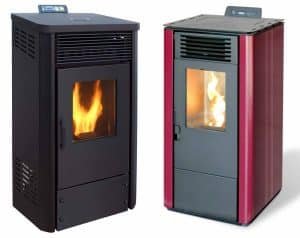
The formula for calculating the kilowatt hour is as follows:
Energy [kWh] = Power [kW] x Time [h]
It follows that 1 kWh = 1 kW x 1 h. This means that if I need to know how many kWh my pellet stove consumes in a year I have to estimate how many hours I will keep the stove on and multiply it by the power of the product.
A 6 kW pellet stove that will remain on for 1150 hours in a year means 6900 kWh.
Now that we understand what kWh are, let's continue to analyze the data provided by CTCU.
We have established the amount of fuel needed to produce 7000kWh. Now in order to better understand and calculate the annual costs of our heating, we need to know how much does a kWh cost depending on the fuel used. The comparative table helps us again:
| Fuel | Average unit price | Average price per kWh | Cost 7000 kWh |
|---|---|---|---|
| Diesel | €1.115/l | 0,116 € |
€ 812,00 |
| Liquid gas (in tank) | €2,782/kg | 0,217 € |
€ 1.519,00 |
| Methane gas (enhanced protection service) | €0.750/m³ | 0,077 € |
€ 539,00 |
| Pellets | €0.3218/kg | 0,067 € |
€ 469,00 |
| Wooden chips | €0.139/kg | 0,032 € |
€ 224,00 |
| Split wood (mixed) | €0.152/kg | 0,035 € |
€ 245,00 |
| District heating | €0.113/kWh | 0,113 € |
€ 791,00 |
Here, however, we have deliberately highlighted the relevant data Diesel and Pellets:
|
Fuel |
Average unit price |
Average price per kWh |
Cost 7000KwH |
|---|---|---|---|
|
Diesel |
€1.115/l |
0,116 € |
€ 812,00 |
|
Pellets |
€0.3218/kg |
0,067 € |
€ 469,00 |
A liter of diesel costs on average €1.116 compared to €0.3218 for pellets.
Therefore, calculating the single expenditure per kWh on an energy need of 7000kWh, the difference in costs is substantial: €812.00 for diesel compared to only €469.00 for pellets!
This data would already be sufficient to make the final assessments.
To adequately evaluate the expense, the total cost of heating is inextricably linked to energy efficiency. This is why making a detailed assessment means making a comparison linked to energy yield.
That is, in the case of diesel: €1.145/l for the energy yield 1 liter of diesel = 10 kWh. By doing the same operation on the other fuels, the cost per kWh of each is obtained.
What about other fuels? What is the consumption ratio between pellets and other fuels most used to heat the house?
We show it to you with the last very clear table that provides the Consumer Protection Center Users
| Fuel | energy value |
|---|---|
| diesel | 10 kWh/l |
| liquid gas | 12.8 kWh/kg |
| methane gas | 9.8 kWh/m³ |
| pellets | 4.8 kWh/kg |
| wooden chips | 4.2 – 4.9 kWh/kg |
| split wood (mixed) | 4.3 kWh/kg |
To obtain the kWh produced by one liter of diesel, are needed approx 2.12 kilos of pellets. We said that a liter of diesel costs €1.115, to obtain the same result in terms of heat we would have to burn 2.12 kilos of pellets, the cost of which is €0.682.
As you can see, pellets only cost more than wood, which however has a lower energy yield.
It follows that, to date, among the options available, the pellet stove is the one that allows for greater economic savings.
It must be said that the calorific value of pellets is lower compared to that of LPG, diesel and methane, but costing much less you can compensate for this gap by burning more fuel, still guaranteeing savings.
Pellet stove consumption: comparison with methane
City methane is increasingly widespread and used for heating and for the production of domestic hot water, so it makes sense to make a comparison with pellets to understand whether it is more or less convenient.
Also here, Let's go over the basics again to correctly interpret the data in the tables above:
- 1 cubic meter of methane develops 9.8 kW
- 1 kg of pellets approximately 4.8 kW.
This means that to release the same heat as one cubic meter of methane it is necessary to burn around two kg of pellets, which however, as we have seen, costs less, about half.
Calculating intense consumption in the months between October and April, with a peak in January and February, one could save approximately €270.00 total.
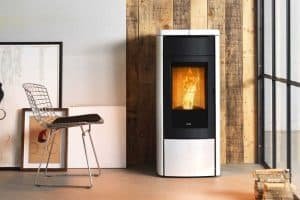
How much pellets cost
The average cost of a 15kg bag of pellets fluctuates between €4.00 and €12.00, a difference resulting from the quality of the product.
In fact, it is not only the quantity of pellets that influences consumption, but also its quality.
In particular, you have to pay attention to the color, which must be clear, and the humidity percentage, which must be as low as possible.
You will also find relevant information on the packaging to the calorific value and ash residue, two very important parameters that justify a more or less high cost of pellets.
How many pellets does a stove burn per day
Previously we reported a comparison between the consumption of pellets and that of other fuels. But how many pellets does a stove burn per day?
Well, obviously it depends a lot on the size of the room. Isolation and use. But if we wanted to make a statistical estimate we could proceed with the following calculation.
Let's take a space of around 60m2, for example a two-room apartment or a larger one. And more space used in an apartment, inside which we install an 8 kWh stove.
Let's assume continuous use throughout the day. So 12 hours, and a consequent consumption of 1 15 kg bag per day.
By purchasing pellets in large quantities, thus saving on the unit cost, we will have an average cost of €4.50 per bag, per day.
Reducing hours of use. Also because a family's home where parents go to work and children go to school will remain empty for a good part of the day. During which obviously it makes no sense to burn pellets, consumption will be lower.
Pellet stove consumption: which parameters to consider
Once it has been ascertained that the pellet allows, given the data in hand, a significant economic saving compared to other solutions. It is important to remember that all these tables are based on ideal drinking situations and optimal environmental conditions.
What do we mean by this?
That is, if the room where you place the pellet stove is drafty and poorly insulated. It has higher than average attics, has poor quality fixtures, without double glazing. It is clear that heat dispersion will affect consumption and, therefore. On the costs to be incurred to heat it adequately.
Naturally this applies to every solution adopted. Whether it's pellets, LPG, methane, diesel or wood, it never hurts to remember it.
The difference between low consumption and waste of resources is made by paying attention to these aspects:
- A correct one installation
- a isolation adequate heat
- a pellets good quality can really do.
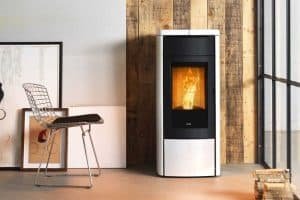
Tax deductions for the installation of a pellet stove
The pellet stove it's an investment, as we have seen, and also allows you to take advantage of the incentives and tax deductions made available by the State for energy requalification or building renovation.
- Just choose pellets that it is of the highest quality, in order to reduce consumption and extend the life of the stove;
- Choose the pellet stove suitable for the environment to be heated, avoiding over or underestimating your real needs;
- Always check the primary air closure and the gaskets, to avoid heat dispersion;
- Set correctly the parameters, entrusting yourself to a professional technician capable of adequately setting the stove settings;
- Make sure the flue is installed correctly. An excessive draft results in a waste of fuel, while a too weak draft could cause the flame to go out and a lower calorific efficiency.
We hope this article has been of great help, and if we have intrigued you, take a look at best models of pellet stoveswith excellent prices
If you are wondering: Which pellet stove to choose? Here you will find a practice guide to brands and models
If you need assistance when purchasing yours, do not hesitate to contact us by calling 06 87811366
Conclusion
I hope this detailed analysis of the consumption of a pellet stove has provided you with the information you need to make informed decisions about heating your home. We explored the differences between pellet stove models, compared consumption with other heating options and analyzed the associated costs.
If you are interested in further exploring pellet stove options and looking for efficient and convenient solutions, I invite you to take a look at the website Climafast.it. You will find a selection of pellet stove models to meet your heating needs.
For further practical advice on heating and to stay up to date with the latest news, also visit our blog at iltermopratico.it . We are here to make your home environment warmer and more welcoming!
If you have questions or need assistance in purchasing your pellet stove, do not hesitate to contact us by calling 06 87811366. We are here to help you make the right choice for your comfort and energy savings.

